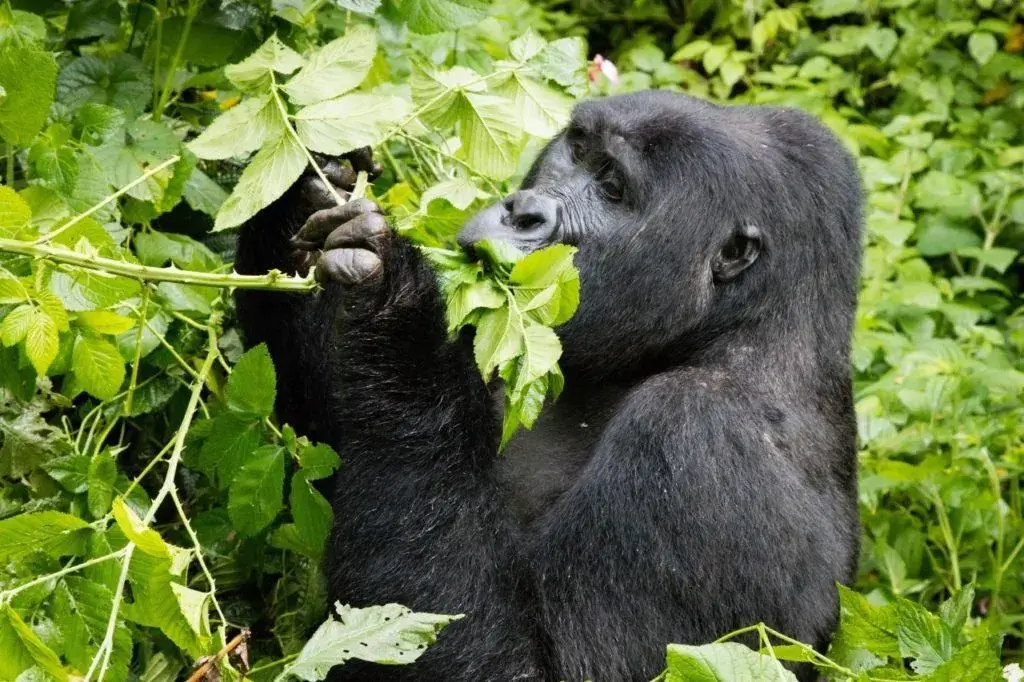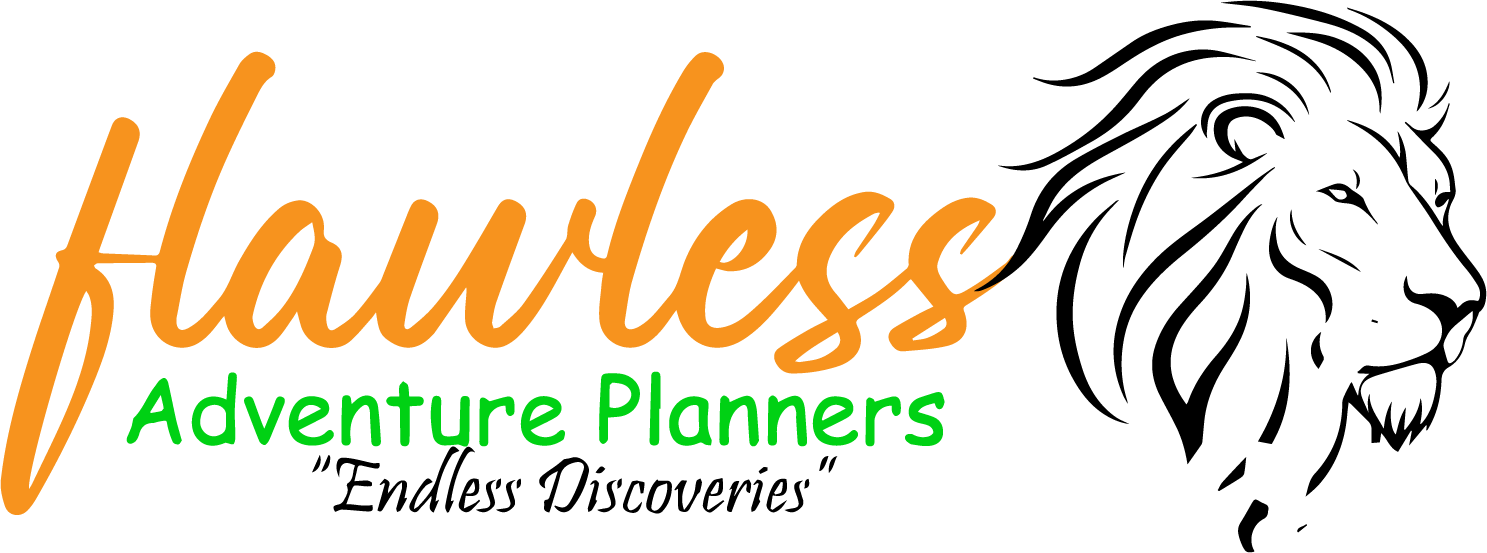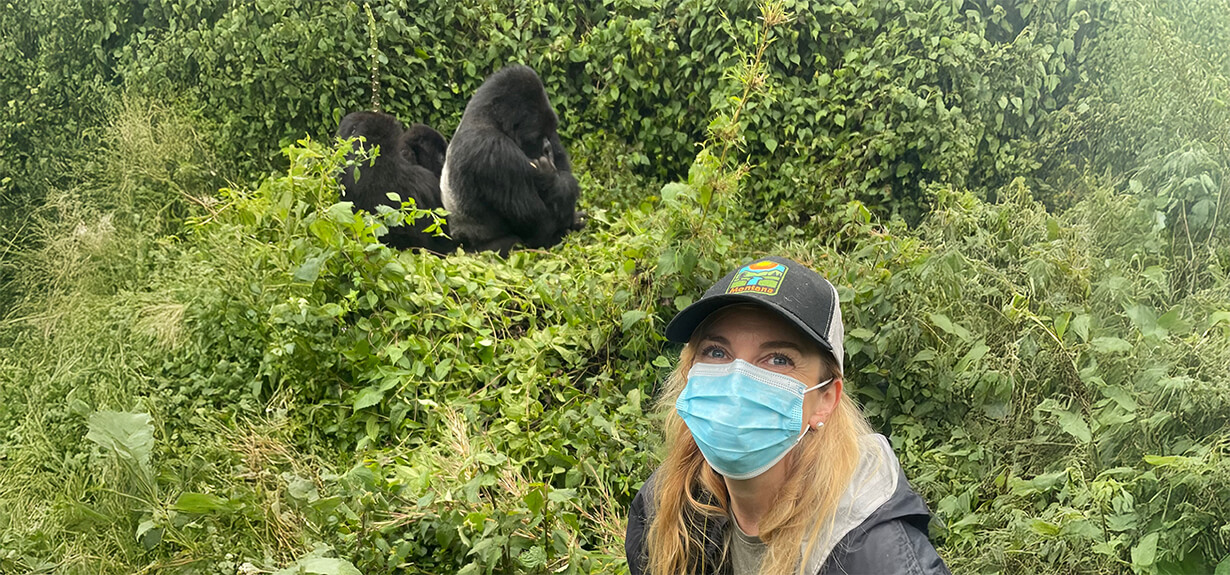Silverback Gorilla Trekking Tours
Silverback Gorilla Trekking Tours -Best Gorilla Safaris in Uganda, Rwanda, & Congo
Silverback Gorilla Trekking Tours offer an adventure that promises a complete immersion into the vibrant heart of the jungle. Embarking on Silverback Gorilla Trekking Tours and Safaris with Flawless Adventure Planners Ltd guarantees you a rare opportunity to witness the majestic endangered mountain gorillas in their natural habitat and their leader(s) – Silverback Gorillas.
With the rich biodiversity and several Protected areas, three magnificent African countries stand as some of the premier safari destinations for primate enthusiasts seeking authentic and thrilling safari experiences. However, embarking on this once-in-a-lifetime journey requires careful planning and consideration to ensure an enjoyable and successful Silverback Gorilla Trekking Tours and Safaris.
Our guide provides essential insights into every aspect of planning your Silverback Gorilla Trekking Tours, from choosing the best time to visit and selecting the destination of choice to understanding the different tour options and booking accommodations. Whether you are a seasoned traveler or a first-time adventurer with plans to enjoy up close with the Silverback Mountain Gorillas, this comprehensive guide will equip you with the knowledge and essential tips needed to make your Silverback Gorilla Trekking Tours a memorable and enriching experience. Embrace the call of the jungle and prepare for a journey that will leave you with lasting memories as well as a life-changing appreciation for the natural World.
About Silverback Mountain Gorillas in Africa
Known for weighing between 180 and 200 kilograms and standing at 1.5 meters tall, silverback gorillas are known for their massive bodies and strength.
A silverback gorilla is an adult male, characterized by a swathe of silver hair on its back, an indicator of maturity. Silverback gorillas are known for displaying dominance and aggression through tree slapping, whooping, chest beating, charging, and sometimes physical fights.

These majestic Giant Apes are a subspecies of Eastern gorillas and are found in three countries in East-Central Africa- Uganda (where they are sheltered in Bwindi Impenetrable and Mgahinga Gorilla National Parks), Rwanda (where they are sheltered in Volcanoes National Park), and the Democratic Republic of Congo (within Virunga National Park).
These primates’ natural habitats include dense rainforests and bamboo forests high in the mountains, at elevations of 8202 -13123 ft above sea level. They are marked by thicker fur, compared to other gorilla subspecies, and this has enabled them to comfortably live in their natural habitats where temperatures sometimes drop below freezing.
Scientifically known as “Gorilla beringei beringei”, mountain gorillas are endangered, with a population of about 1080 individuals. Additionally, they live in two isolated groups- Bwindi Impenetrable Forest and the Virunga Conservation Area (the Congo’s Virunga National Park, Volcanoes National Park in Rwanda, and Uganda’s Mgahinga Gorilla National Park).
It will interest you to know that mountain gorillas are related to humans, sharing 98.2% DNA with mankind. This means that a slight exposure to communicable human diseases such as flu, cough, measles, and others can have a serious impact on their health and lives.
Mountain gorillas are herbivores that eat almost all day long, and 85% of their diet comprises stems, leaves, and shoots. Their menus can sometimes include tree barks, roots, ants, larvae, and snails.
Where is the best place to go for silverback gorilla trekking?
-
Silverback Gorilla Safaris in Uganda
Uganda has two magnificent places to enjoy silverback gorilla trekking tours- Bwindi Impenetrable National Park and Mgahinga Gorilla National Park.
Bwindi Impenetrable National Park is the busiest silverback gorilla trekking destination in Uganda and the World at large. Located in the southwestern side of the country, the Park has over 480 mountain gorillas, representing almost half the World’s population of these unique mammals.
The Park has the highest number of habituated gorilla families (25), hence a total of 200 gorilla permits are issued each day for this Protected Area alone. Boasting four trekking sectors/regions, your accommodation will depend on where you are tracking from.
Still on accommodation, some of our preferred options for Bwindi include Gorilla Leisure Lodge, Gorilla Safari Lodge, Ichumbi Gorilla Lodge, Four Gorillas Lodge, Gorilla Heights Lodge, Clouds Mountain Gorilla Lodge, Chameleon Hill Forest Lodge, Nkuringo Bwindi Gorilla Lodge, and Lake Mulehe Lodge are some of the options for those planning silverback gorilla trekking in Rushaga and Nkuringo –(the Southern sectors).
For the Buhoma sector, you can choose from budget to luxury options that include Ride 4 a woman Guesthouse, Engagi Lodge, Buhoma Community Rest Camp, Mahogany Springs Lodge, Buhoma Lodge, Volcanoes Bwindi Lodge, Gorilla Bluff Lodge, Sanctuary Gorilla Forest Lodge, and more.
With only one habituated gorilla group in Mgahinga Gorilla National Park, only 8 gorilla permits are issued by UWA –Uganda Wildlife Authority each day. For accommodations, you can stay at Mount Gahinga Lodge, Amajambere Iwacu Community Camp, Mucha Hotel Kisoro, Travelers’ Rest Hotel Kisoro, and others.
-
Silverback Gorilla Trekking Tours and Safaris in Rwanda
With only 16000 hectares, Volcanoes National Park is another destination for silverback gorilla trekking. Created in 1925, this Park is home to 13 habituated gorilla families; hence, a total of 104 gorilla permits are issued each day by RDB –Rwanda Development Board.
Accommodations around Volcanoes National Park include Bisate Lodge, Singita Kwitonda Lodge, One & Only Gorilla’s Nest, Sabyinyo Silverback Lodge, Muhabura Hotel, Five Volcanoes Boutique Hotel, the Bishop’s House, Amakoro Songa Lodge, Kinigi Guesthouse, Virunga Lodge, Bisate Reserve, and many others.
-
Silverback Gorilla Trekking Safaris in Congo (Virunga & Kahuzi-Biega)
Silverback gorilla trekking tours in the Democratic Republic of Congo are conducted in Virunga National Park, a 7900-square-kilometer Protected Area set in the Eastern side of the country. Here, a total of 8 gorilla families have been fully habituated for tracking, hence only 64 permits are issued per day.
How much does a silverback gorilla trekking permit cost?
The cost of a silverback gorilla trekking permit depends on the location/country. If you plan to enjoy the experience in the Democratic Republic of Congo, then you should buy a gorilla permit, which costs $400 per person.
Updated Silverback gorilla trekking permits for Uganda cost $800 per person for foreign non-residents, $700 per person for foreign residents, and Shs. 300,000 for East African Community Citizens (Uganda, Kenya, Rwanda, Tanzania, and others).
If Rwanda is your preferred destination for undertaking your silverback gorilla trekking tour, then you should be ready to part with $1500 per person for a gorilla permit, which is issued by the Rwanda Development Board.
When is the best time to go silverback gorilla trekking?
Choosing the best time for your silverback gorilla trekking tour is essential to maximize your chances of spotting these majestic Giant Apes in their natural habitat. The timing of your tour can significantly influence tracking duration and overall experience.
Based on visitor experiences, the ideal time is between June and September, as well as between December and February. During these months, the weather is pleasant, and guided walks/treks through the jungle are less challenging, as reduced rainfall levels mean forest trails are less muddy or slippery and vegetation sparser.
These are also peak months, hence availability for gorilla permits and accommodations is a problem, especially for last-minute bookings. This is undeniably the most popular trekking season, leading to higher tourist numbers; hence, booking accommodation and gorilla permits in advance is advisable.
The wet/rainy season- March, April, May, October, and November is marked by heavy precipitation levels, hence lush greenery and vibrant landscapes. This makes silverback gorilla trekking difficult as forest trails are muddy and slippery. Heavy rainfall also leads to difficulty in accessing the National Park, and come roads even get closed.
There are fewer tourists during this season compared to the dry season, hence providing a more intimate experience.


